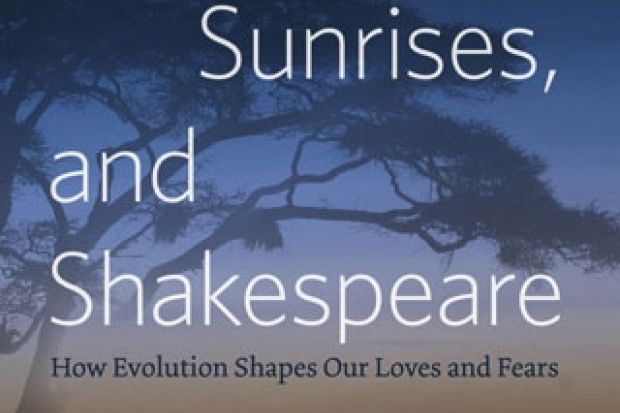Humans are very emotional creatures. We respond to the world around us with pleasure, anger, fear, pain, surprise and disgust. Some argue that these reactions are due to learned social perceptions, or based on previous positive or negative interactions. But George Orians argues that our emotional responses to aesthetics in nature are hardwired and an evolutionary legacy of our animal origins. Here, he explores the relationship between our “ghosts of environments past” and our view of the world.
A large part of this book is dedicated to the “savannah hypothesis” – an idea originally proposed by Orians in 1980. He argues that today’s parks and green spaces are designed to mimic savannahs, because an acacia-like tree with a good canopy resurrects feelings of a fertile habitat and a refuge from predators. I was left unconvinced; although Orians offers ideas for testable predictions he does not deliver the data or sufficient detail of supporting studies.
I found his opinions on the evolutionary origins of our enjoyment of music more compelling: “no human culture known today or at any time in recorded history lacked music”. The origins of basic music are likely to be similar to other animals that use vocal calls for imitation, communication and territorial alarm calls. But Orians believes that the elaboration of musical repertoire may be due to sexual selection. Across much of the animal kingdom, more elaborate songs equals a greater number of sexual partners, because it is a signal of health and vigour. Observations of human cultures seem to suggest a similar pattern, with accomplished musicians attracting more sexual partners. If this is true, they will leave more descendants and, therefore, musical ability could be more widely represented in future generations.
Snakes, Sunrises, and Shakespeare explores topics concerned with environment and emotions, and it encourages us to view the world from a primal perspective. But why should our emotional responses to our environment exhibit such a time lag? Why should we still react like our hominid ancestors? Because, Orians argues, it is biologically “expensive” to learn – it necessitates building and maintaining a system that can learn and store memories. There can also be a price associated with not learning life’s lessons. Thus, “pre-programmed” responses can offer an advantage and help to keep us safe.
Orians tells the story of a world viewed through the eyes of our hominid ancestors. We are programmed to react to natural stimuli in a way that promotes our survival in a world that the majority of us no longer inhabit. Perhaps it doesn’t matter why we find sunrises beautiful or snakes scary, but while most of our emotional reactions pose no problem to modern living, there are some that are maladaptive. Our emotional connection with food, for instance, is resulting in an obesity epidemic; and our fear responses to animals such as snakes and lions are disproportionate compared with our reactions to modern threats such as guns and speeding cars. We are, after all, animals, and it adds a new dimension of wonderment to imagine my hominid ancestor gazing on a sunrise with the same sense of beauty and awe.
Snakes, Sunrises, and Shakespeare: How Evolution Shapes our Loves and Fears
By Gordon H. Orians
University of Chicago Press, 224pp, £21.00
ISBN 9780226003238 and 3375 (e-book)
Published 23 April 2014
Register to continue
Why register?
- Registration is free and only takes a moment
- Once registered, you can read 3 articles a month
- Sign up for our newsletter
Subscribe
Or subscribe for unlimited access to:
- Unlimited access to news, views, insights & reviews
- Digital editions
- Digital access to THE’s university and college rankings analysis
Already registered or a current subscriber? Login





